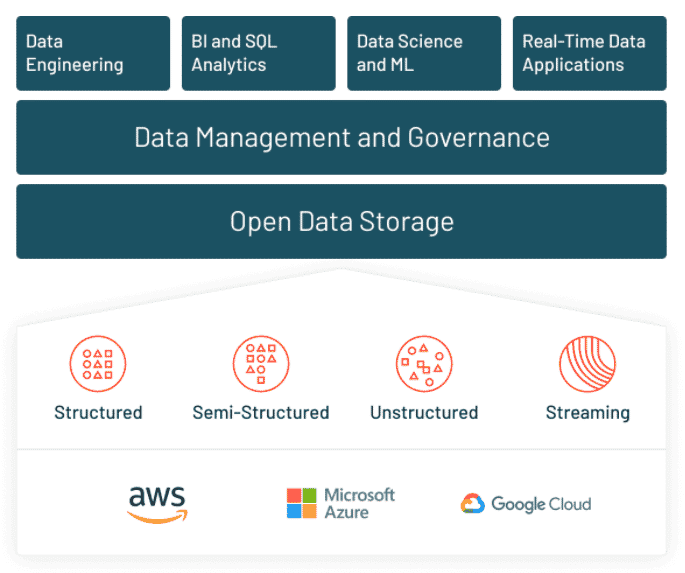Databricks is making it easier for channel partners to use the vendor’s Lakehouse architecture to help business customers better run their data, analytics and artificial intelligence (AI) workloads using a single platform.
The San Francisco-based company’s Lakehouse Platform is designed to combine the key features of data warehouses and those of data lakes (hence the name Lakehouse) into a single architecture, simplifying the management work that companies need to do with the massive amounts of different types of data that they’re accumulating, including structured, unstructured semi-structured and streaming data.
Databricks’ new Partner Connect is a single portal through which channel partners can access a range of valid tools around data, analytics and AI that they can integrate into their Databricks Lakehouses across multiple cloud providers.
“With Partner Connect, we’re able to open up the Databricks Lakehouse Platform to partners in new ways that will make it much easier for us to collectively serve customers better,” Ali Ghodsi, CEO and co-founder of Databricks, said in a statement. “Partners will be able to directly reach Databricks customers with their solutions in the moment, and our sales and marketing teams will be able to collaborate closely to solve customer challenges.”
Databricks has been one of the hottest startups in the brave new world of AI and data management, raising a stunning $3.6 billion to date, so the Databricks name alone will likely attract channel partners eager to tap into the company’s success.
Also read: How Can the Channel Use AI?
Reducing Data Complexity
According to company officials, the cloud-based Lakehouse architecture was developed to reduce complexity in the data infrastructure for enterprises, enabling them to adopt a platform that they could use with open technologies and allowing them to take better advantage of analytics and AI tools.
The open nature of the platform helps drive its agility and flexibility. The architecture is built to easily scale, with a single platform able to process multiple exabytes of data per day for analytics and AI workloads.
However, Databricks officials said that organizations and partners needed the ability to leverage tools that Databricks didn’t offer. With the Partner Connect portal, which was unveiled this week, channel partners can now integrate third-party tools from Databricks’ tech partners into their solutions.
Partners can use the portal to drive integration of products from such companies as Fivetran (for managing data delivery), Labelbox (training data platform), Microsoft Power BI (data visualization), Prophecy (data engineering), Rivery (DataOps) and Tableau (data visualization).
Integrations with such companies as Airbyte (data integration), Blitzz (data pipelines) and dbt Labs (analytics) are planned for the future.

Shifting the Integration Work
Databricks is taking the resource and cost burden of integrating such technologies off of partners and end users by allowing it to be done via the Lakehouse Platform. Partners not only will be able to integrate the data tools they already use but also uncover new pre-validated offerings that could help them with their business needs.
AI is a key technology for enabling the automation that is increasingly being demanded in many areas of the complex and ever-evolving IT environment. Gartner analysts earlier this year said the global market for technology that enables what they call “hyperautomation” will hit $596.6 billion in 2022, up from about $532.4 billion this year. In 2020, that number was $481.6 billion.
Automation is Key
Gartner defines hyperautomation as a way to enable organizations to rapidly identify, vet and automate as many processes as possible by leaning on such technologies as robotic process automation (RPA), low-code application platforms, AI and virtual assistants.
“Hyperautomation has shifted from an option to a condition of survival,” Fabrizio Biscotti, research vice president at Gartner, said in a statement at the time. “Organizations will require more IT and business process automation as they are forced to accelerate digital transformation plans in a post-COVID-19, digital-first world.”
‘automation has become the number-one growth opportunity in the entire tech industry’
Jay McBain, a channel analyst with Forrester Research, told Channel Insider that demand for automation technologies has grown since the onset of the COVID-19 outbreak early last year.
“As we reach the 20-month mark of the pandemic, automation has become the number-one growth opportunity in the entire tech industry,” McBain said. “RPA firms are growing significantly, no-code and low-code platforms accelerating, and workflows and business rules engines inside of SaaS [software-as-a-service] platforms are exploding with demand.”
He added that “automation starts with decision-grade data, and partners can help their customers drive better speed-to-market, agility, actionable intelligence and data accessibility with a future-friendly program like this.”
A $38 Billion Startup
Databricks, which was founded in 2013, has seen its fortunes rise in recent years. The company in August raised another $1.6 billion in funding, bringing the total it has raised to $3.6 billion and its overall valuation to a whopping $38 billion.
Ghodsi at the time said the money would be used to accelerate innovations around the Lakehouse Platform as Databricks looks to displace traditional data warehouses. The company also is looking to expand its reach globally by entering new markets, building out its catalog of industry solutions and growing its partner ecosystem – hence this week’s announcement.
Its customers include such names as Comcast, AT&T, Shell, Ericsson, ABN Amro and the U.S. Department of Transportation.
Further reading: MSPs Are Turning Software Into New Services – As We Predicted
